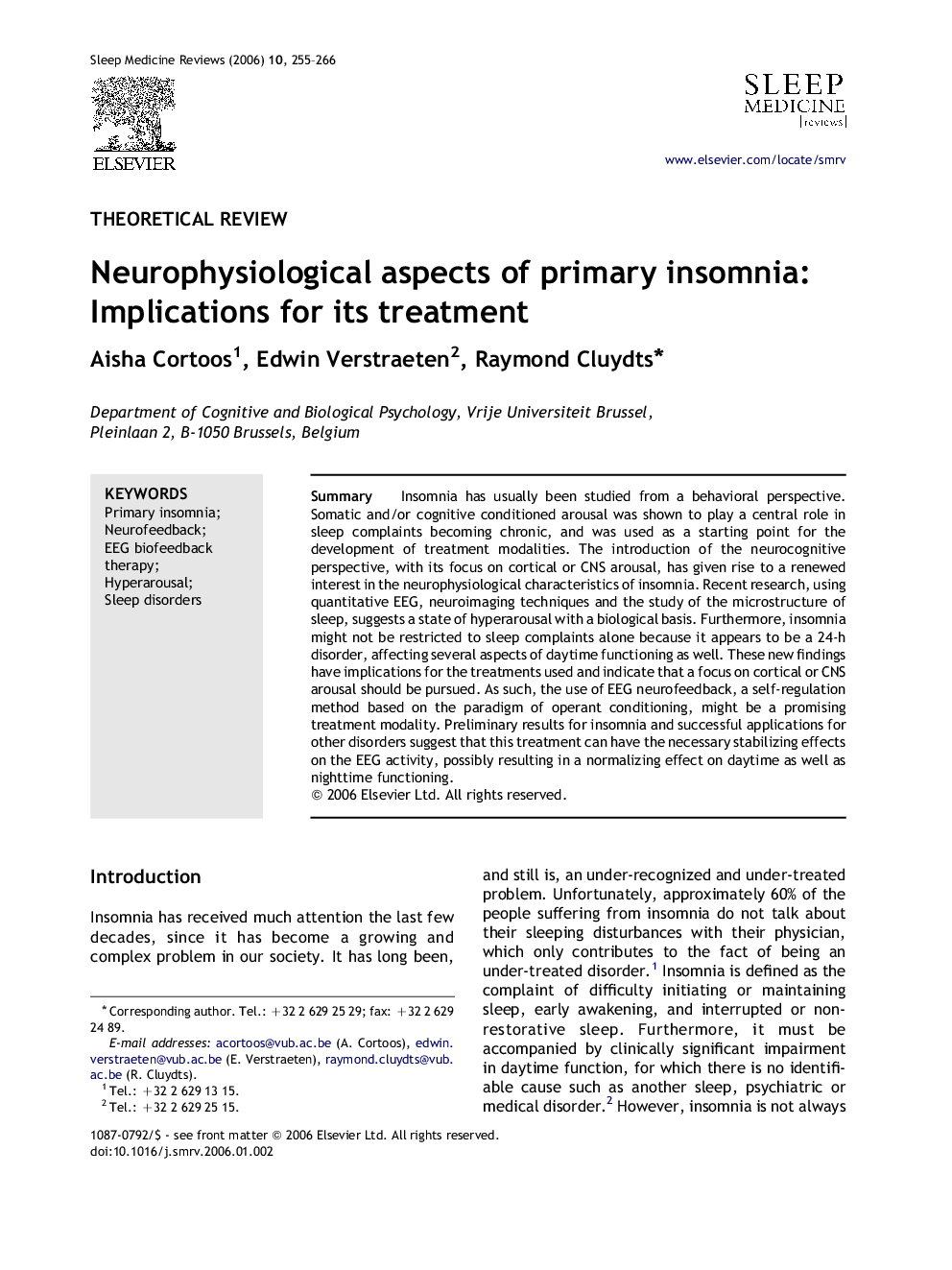| Article ID | Journal | Published Year | Pages | File Type |
|---|---|---|---|---|
| 3091901 | Sleep Medicine Reviews | 2006 | 12 Pages |
SummaryInsomnia has usually been studied from a behavioral perspective. Somatic and/or cognitive conditioned arousal was shown to play a central role in sleep complaints becoming chronic, and was used as a starting point for the development of treatment modalities. The introduction of the neurocognitive perspective, with its focus on cortical or CNS arousal, has given rise to a renewed interest in the neurophysiological characteristics of insomnia. Recent research, using quantitative EEG, neuroimaging techniques and the study of the microstructure of sleep, suggests a state of hyperarousal with a biological basis. Furthermore, insomnia might not be restricted to sleep complaints alone because it appears to be a 24-h disorder, affecting several aspects of daytime functioning as well. These new findings have implications for the treatments used and indicate that a focus on cortical or CNS arousal should be pursued. As such, the use of EEG neurofeedback, a self-regulation method based on the paradigm of operant conditioning, might be a promising treatment modality. Preliminary results for insomnia and successful applications for other disorders suggest that this treatment can have the necessary stabilizing effects on the EEG activity, possibly resulting in a normalizing effect on daytime as well as nighttime functioning.
